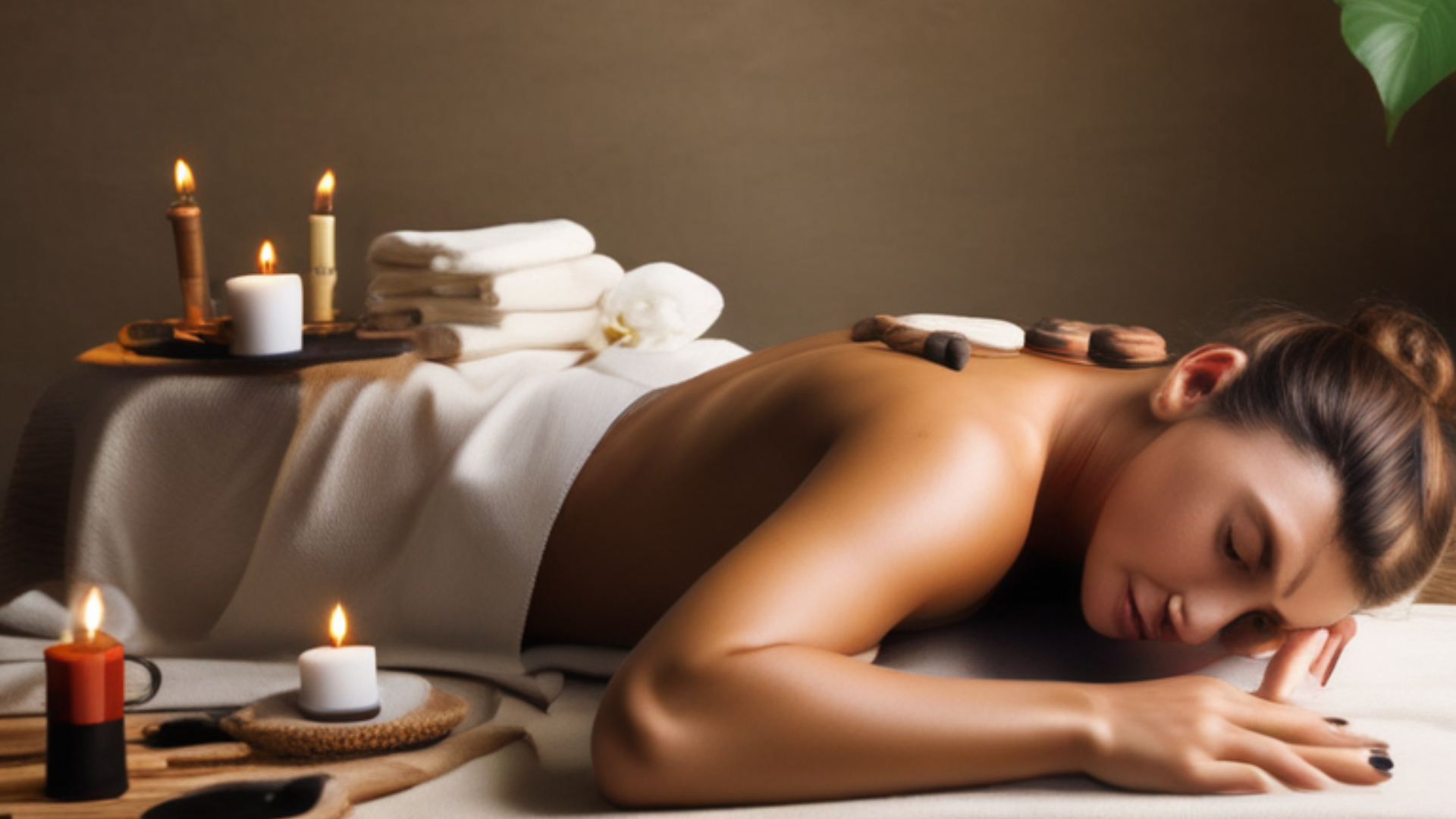Introduction
In the world of Ayurveda, the ancient system of natural healing from India, Abhyanga stands out as a cornerstone practice. This traditional form of self-massage, involving warm, herb-infused oils, is not just a luxurious treat but a deeply therapeutic ritual that offers profound health benefits. Abhyanga, often referred to as the art of oil massage, plays a significant role in promoting overall well-being, detoxifying the body, and balancing the mind. In this article, we will explore how Abhyanga massage can transform your health, delve into its process, and discuss the myriad benefits it offers.
What is Abhyanga Massage?
Abhyanga is a Sanskrit term that translates to “oil massage.” It is a traditional Ayurvedic practice where the body is anointed with warm, herb-infused oils in a specific, rhythmic manner. This practice is believed to nourish the skin, calm the nervous system, and balance the doshas (body energies) – Vata, Pitta, and Kapha. The technique involves long, sweeping strokes along the limbs and circular motions on the joints, tailored to each individual’s constitution and health needs.
The Process of Abhyanga Massage
Performing Abhyanga is a mindful and intentional process. Here is a step-by-step guide to help you incorporate this practice into your daily routine:
- Preparation: Choose a quiet and warm environment. Select an oil that suits your dosha or specific health condition. Sesame oil is commonly used for its warming properties, while coconut oil is cooling and suitable for Pitta types.
- Warming the Oil: Heat the oil to a comfortable temperature. You can do this by placing the oil bottle in a bowl of hot water.
- Application: Sit or stand comfortably. Begin by applying the oil to the crown of your head, massaging it in circular motions. Gradually move to your face, ears, neck, and shoulders.
- Body Massage: Use long, sweeping strokes on your limbs and circular motions on your joints. Massage the abdomen and chest in broad, clockwise, circular motions. Pay special attention to areas that are prone to tension, such as the lower back and shoulders.
- Duration: Spend at least 15-20 minutes massaging your entire body. Allow the oil to penetrate the skin for another 10-15 minutes before rinsing off with warm water.
- Post-Massage Care: After rinsing off the oil, pat your skin dry and avoid using soap immediately. Allow your skin to retain some of the beneficial oils.
Health Benefits of Abhyanga Massage
The practice of Abhyanga offers numerous health benefits, ranging from physical to mental and emotional well-being. Here are some of the key advantages:
- Enhances Skin Health and Detoxification: The warm oils used in Abhyanga penetrate deeply into the skin, nourishing it from within. This helps to improve skin texture, reduce dryness, and promote a healthy glow. Additionally, the massage stimulates lymphatic drainage, aiding in the detoxification process.
- Promotes Relaxation and Stress Relief: Abhyanga is incredibly calming for the nervous system. The rhythmic strokes and warm oils help to soothe the mind, reduce stress, and alleviate anxiety. This practice is often recommended for those suffering from insomnia or restlessness.
- Boosts Immunity and Improves Circulation: Regular Abhyanga stimulates blood circulation, ensuring that nutrients are efficiently delivered to cells and toxins are removed. This not only boosts overall immunity but also enhances energy levels and vitality.
- Supports Joint Health and Flexibility: The massage techniques used in Abhyanga help to lubricate the joints, reducing stiffness and improving flexibility. This is particularly beneficial for individuals with arthritis or joint pain.
Abhyanga for Specific Health Concerns
Abhyanga is versatile and can be tailored to address specific health concerns:
- Stress Relief and Mental Clarity: For those dealing with high stress or mental fatigue, Abhyanga provides a grounding and calming effect. The practice helps to clear mental clutter, enhance focus, and promote a sense of peace.
- Detoxification and Lymphatic Drainage: Abhyanga supports the body’s natural detoxification processes by stimulating the lymphatic system. This helps to eliminate toxins and reduce fluid retention.
- Muscle Soreness and Joint Pain: The warm oils and massage techniques used in Abhyanga help to relieve muscle tension and joint pain. This makes it an excellent practice for athletes or individuals with physically demanding lifestyles.
Scientific Evidence and Research
While Abhyanga has been practiced for centuries, modern research is beginning to validate its benefits. Studies have shown that regular massage can reduce cortisol levels, the stress hormone, and increase serotonin and dopamine, which are associated with happiness and well-being. Additionally, research indicates that massage can improve immune function, reduce inflammation, and enhance overall health.
How to Incorporate Abhyanga into Your Daily Routine
Incorporating Abhyanga into your daily routine can be a transformative experience. Here are some tips to get started:
- Consistency is Key: Aim to perform Abhyanga at least 3-4 times a week. For best results, integrate it into your morning routine to start your day with a sense of calm and balance.
- Create a Relaxing Environment: Set up a warm, quiet space where you can perform the massage without interruptions. Use calming music or essential oils to enhance the experience.
- Use Quality Oils: Invest in high-quality, organic oils suited to your dosha or health needs. This ensures that you receive the maximum benefits from the practice.
- Listen to Your Body: Pay attention to how your body responds to the massage. Adjust the pressure and duration as needed to ensure that the experience is comfortable and beneficial.
Common Questions and Misconceptions
Here are some frequently asked questions about Abhyanga:
- Can I Perform Abhyanga on My Own? Yes, Abhyanga can be performed as a self-massage. With practice, you can master the techniques and enjoy the benefits of this ancient practice.
- How Long Should the Massage Last? Ideally, the massage should last for 15-20 minutes, followed by a 10-15 minute period for the oil to penetrate the skin before rinsing off.
- What if I Don’t Have Time for a Full Abhyanga? Even a brief 5-10 minute massage can be beneficial. Focus on key areas such as the head, neck, and feet if you’re short on time.
Conclusion
Abhyanga massage is more than just a physical treatment; it is a holistic practice that nurtures the body, mind, and spirit. By incorporating this ancient Ayurvedic ritual into your routine, you can experience profound health benefits, from improved skin health and detoxification to enhanced relaxation and mental clarity. Embrace the transformative power of Abhyanga and discover a path to greater well-being and balance.
If you haven’t tried Abhyanga massage yet, now is the perfect time to start. Set aside a few minutes each day to indulge in this soothing practice and observe the positive changes it brings to your health and well-being. Share your experiences with us and explore our range of Ayurvedic products designed to enhance your Abhyanga practice. Sign up for our newsletter or follow us on social media for more Ayurvedic health tips and insights.
By integrating Abhyanga into your daily routine, you are not only honoring an ancient tradition but also taking a significant step towards a healthier, more balanced life.





